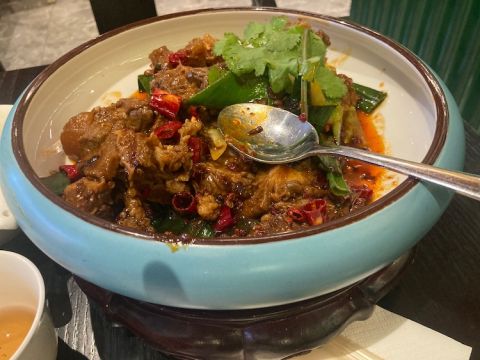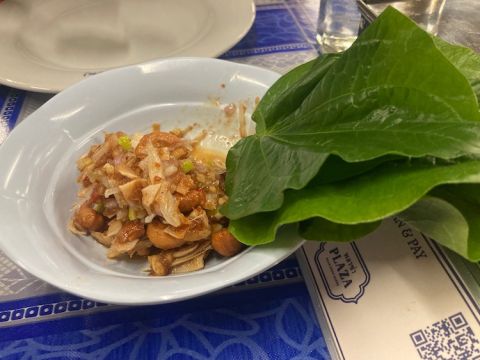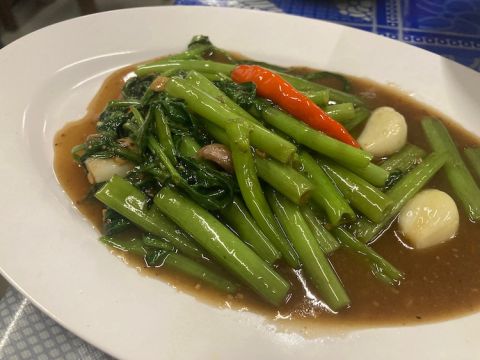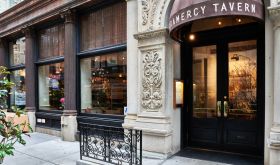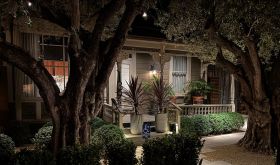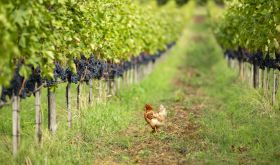With travel to China currently impossible and likely to remain so for some time, and travel to Japan and Thailand sadly not on the horizon, I thought I would try the next best thing and enjoy three London restaurants that were new to me and specifically offered the cuisine of each of these three countries.
First, I ventured to Japan, or more specifically to somewhere that recalled the famous Mount Fuji, The Fuji Grill, the Japanese restaurant of the Beaverbrook Townhouse on Sloane Street.
This is the extremely smart renovation of what was the former London home of the Beaverbrook family, now elegantly converted into a townhouse with 14 bedrooms, a bar and a Japanese dining room. The owners have hired sensibly: the restaurant’s general manager Trudi Fairweather is ex Nobu; the head chef Alex Del is ex Roka; and their sushi chef, Jan Horak, in charge of sushi and the seasonal omakase menu here, although born in Czechoslovakia, spent his formative years at London’s Yashin sushi restaurant.
When I walked in I was greeted warmly and shown through to the restaurant, where I was seated at what must be one of the world’s heaviest dining tables. I was then presented with a menu that was more like a relic from the past. It was a beautifully printed four-page document inside a thick piece of card with, on the cover, an image of Mount Fuji and the promise of ‘an immersive, intimate, and authentic dining experience’. This sets the bar quite high.
The food and the sake I enjoyed almost lived up to this claim. I began with a cup of ‘miso cappuccino’ that was delicious. Served in a cup with the outline of an aircraft that is the townhouse’s logo (Beaverbrook was minister for aircraft production during the Second World War) embellished on its foamy top, this was an elegant opener: salty, engaging and stimulating. I then followed this with four pieces of sashimi: brill, mackerel, toro (fatty tuna) and scallop. Each was excellent. (They work only with fishermen who practise the relatively humane ike jime when killing the fish.)
I followed this with one main course, monkfish from their robata grill with shiso and finger lime coated in crisp kombu along with a bowl of steamed Koshihikari rice, which is highly esteemed in Japan. Four pieces of moist fish arrived, elegantly wrapped in kombu (kelp) and sitting on an extremely appetising sauce that made me glad of the rice. With this I drank a 100-ml serve of two sakes, each beautifully presented in a small decanter that was itself sitting in a glass dish filled with ice and water. An Akashi Tai Yuzushu and a slightly heavier Kokuryu Fukui displayed sake’s natural affinity for this style of cooking. With dessert the bill was £140.62.
And I left with a mixture of emotions. That I had been extremely well fed was paramount so I stepped out onto Sloane Street happy. But I also left disappointed and unfulfilled. One of the greatest charms of eating top-quality sushi is the prospect of ‘eating with your eyes’, of seeing the fish and the sushi chefs at work. This is a pleasure denied here. The kitchen is off the dining room behind the proverbial swing doors and all their knife skills are hidden away. This is a great shame.
The distance between Japan and China is over 3,000 kilometres but in terms of cooking styles it is even larger; whereas in Japan the chefs are often on show, in China they rarely are. And in the UK, this means that chefs in Chinese restaurants, particularly those in London’s Chinatown, are firmly located in the basement. (One of restaurateur Alan Yau’s many design innovations was to reveal his chefs at work at Hakkasan.) So the good news that a branch of Royal China, famous since 1996 for its dim sum, has finally opened in Gerrard Street has to be tempered with the news that here again the chefs are hidden away in the basement.
This opening also comes at a further cost as their genial general manager explained to me: ‘We have opened here because we have had to close our original branch on Queensway as the noise and chaos caused by the building work made it impossible. At the far end there is the complete redevelopment of the Whiteley’s site. And facing Kensington Gardens, very close to where our restaurant used to be, is the redevelopment of Park Modern into a mixed residential and commercial building. It just got too much and our owner, who also owns this freehold, decided to move that restaurant here.’
And while their dim sum are this restaurant’s major attraction I came here for its secondary attraction, its spicy Szechuan food, exemplified in the restaurant’s other name, Chuan (skewered meat), which at 5.30 early one evening, I felt very much in need of.
Confronted by a vast array of menus, I focused on the black and red Chuan menu which listed the chef’s selection of cold starters down one side and hot main courses on the other. From the former I bravely chose three, each £6.60: sliced beef and ox tripe, duck tongue Szechuan style and a Chinese cucumber salad, all served in a wooden box divided into three. The ox tripe I could do without honestly. The duck tongue was simply too spicy for me, while the cucumber salad, despite the obvious chillies, was at least cooling. I was glad of my pot of Pu-erh tea.
For my main course I chose a dish of Sichuan beef brisket, which arrived looking ominously spicy, topped with lots of bright red chillies and pieces of spring onion, in a large dish that would certainly have easily fed two accompanied by the necessary bowl of rice. The meat was not flawlessly butchered but it was soft and succulent and lasted a good long time. I paid my bill of £47.69 and set off into a very crowded Chinatown.
No way of life puts as many chefs on show as Thai. Just think of all those street-food ‘restaurants’ in Bangkok.
The heat of these places has inspired Karam Sethi, the founder of JKS Restaurants. His partner in everything Thai is Luke Farrell, who, as well as running Hand Hammered Woks, manages a 35-metre-long tropical greenhouse in Ryewater, Dorset, full of Asian vegetables, herbs and spices. Back in 2009 Farrell was an intern at JKS’s Trishna. Sethi and Farrell stayed in touch before developing a partnership that can be enjoyed in the new Plaza above the Arcade food hall by Tottenham Court Road station (handy for the new Elizabeth Line).
When Arcade first opened pre-COVID, it lacked colour and inspiration. But since JKS took over they have changed all that, injecting much brighter colours into the ground floor and far spicier food – inter alia Nepalese and Indonesian – while retaining a burger bar. At the far end, up a flight of stairs, is the Thai restaurant, Plaza Khao Gaeng, which is the only restaurant in the Arcade that is bookable. (A Thai restaurant was originally planned for the ground floor but it was Sethi’s idea to move this upstairs.)
Collectively, Sethi and Farrell, together with North End Design, have created an impressive replica of a Bangkok cafe (think the deliberately harsh strip lighting, plastic tablecloths and pictures of the Thai royal family shown at the top of this article) that specialises in southern Thai cooking. The low ceiling accentuates the feeling of heat. And off on the far wall is an open kitchen where three chefs, two Western and one Asian on the Wednesday night when we visited, can be seen cooking.
The food we ate was extremely good, as was were the cocktails – a Gimlet and the Thai-ami vice, an extremely vibrant mixture of banana, rum, pineapple, guava and pandan leaves – and was in fact hotter and spicier than that served in most Thai restaurants in London. We began with miang Phuket, the chewy amalgam (shown above) of coconut and cashew nuts with palm sugar and, of course, chilli; pik gai, plump, crisply-fried chicken wings with turmeric; and nam chub, fresh green vegetables and herbs to be dipped in a roast shrimp paste that was just too spicy for us. (As well as the fairly brief à la carte menu, there is a £35 set menu although neither offers dessert, which is perhaps a missed opportunity.)
We followed this with gaeng gati gai, a chicken and coconut curry, a lidded tin of jasmine rice and a plate of morning glory (above), sauteed with garlic, chillies and fermented soy beans. Most people drink beer but we were determined to try Karam’s sister Sunaina’s wine choices and ordered a couple of glasses of wine, a Nebbiolo 2019 from Elvio Tintero that was unfortunately served too warm and an excellent Grüner Veltliner 2020 from Christoph Bauer.
I paid my bill of £93.82 and felt that I had just spent an hour in Thailand. A short trip on the brand new Elizabeth Line assured me that I had not in fact left London.
The Fuji Grill at Beaverbrook Town House 115 Sloane Street, London SW1X 9PJ; tel: +44 (0)20 3988 6611
Chuan Royal China 30 Gerrard Street, London W1D 6JS; tel: +44 (0)20 7734 1388
Plaza Khao Gaeng Arcade Food Hall, 103–105 New Oxford Street, London WC1A 1DB



